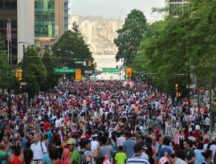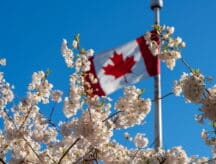Immigration to Canada: The Year in Review
 2016 has been a remarkable year, and 2017 promises to bring even more positive news for individuals and families immigrating to Canada
2016 has been a remarkable year, and 2017 promises to bring even more positive news for individuals and families immigrating to Canada
Canadian immigration programs can be segmented into three broad categories, namely the economic programs, the Family Class programs, and refugee/humanitarian programs. In all three categories, 2016 can be described as an exceptional year. The new Liberal government saw opportunities to improve programs across the board and, by working in tandem with provincial partners, they managed to increase the number of new arrivals, reduce processing times, and give more people the opportunity to fulfil their life dream of coming to Canada.
Of course, it’s the details that matter. Just how did this positive Canadian vision for immigration come about? Who was involved, who benefited, and why? Let’s cast our minds back to this time last year.
January
As the year began, the new government had only been in office for two months. John McCallum had been named as the new Minister of Immigration, and one of the first acts was to re-brand what had been known as Citizenship and Immigration Canada (CIC) as Immigration, Refugees and Citizenship Canada (IRCC). It was around this time that IRCC was heavily focused on the government’s election promise to settle tens of thousands of refugees from Syria, an effort that was widely commended and ultimately successful.
On the Family Class front, the Parent and Grandparent Program (PGP) application cycle proved immensely popular, with IRCC accepting 10,000 applications for processing after more than 14,000 applications were received within three days.
There were also developments in the economic programs. Quebec loosened the eligibility criteria for its skilled worker program and launched a new online application management system called Mon Projet Québec, Alberta began accepting new applications again under the Alberta Immigrant Nominee Program, and the Saskatchewan Immigrant Nominee Program reopened all categories, some of which reached their intake caps within days. In addition, there were three Express Entry draws, with a total of 4,449 Invitations to Apply (ITAs) issued in January alone.
February
2016 was a year in which the Provincial Nominee Programs (PNPs) became more dynamic than ever before. In February, British Columbia launched its Skills Immigration Registration System (SIRS), a new system for ranking and selecting workers and international graduates through most categories of the BC PNP. This includes categories aligned with the federal Express Entry system, as well as certain ‘base’ categories that are processed outside that system. Over the course of the year (up to the time of writing), BC has issued more than 6,000 Invitations to Apply for immigration to the province through the SIRS.
The federal Express Entry system continued to invite candidates to apply for permanent residence. The lowest Comprehensive Ranking System (CRS) cut-off threshold in February was 453.
March
The government of Canada released its 2016 Immigration Levels Plan early in March, setting a target of up to 305,000 new immigrants over the course of the year. At the time, this was a record target number in modern Canadian history. More than half of these newcomers would come through the economic programs, while there were significant target increases under the Family Class and refugee/humanitarian categories. Minister McCallum said the government’s goal was to “bring in immigrants who wish to build a better Canada.”
The government also made commitments to reduce processing times, remove the conditional permanent residence provision from certain sponsored spouses and common-law partners, and ease the pathway to permanent residence for international students and graduates in Canada.
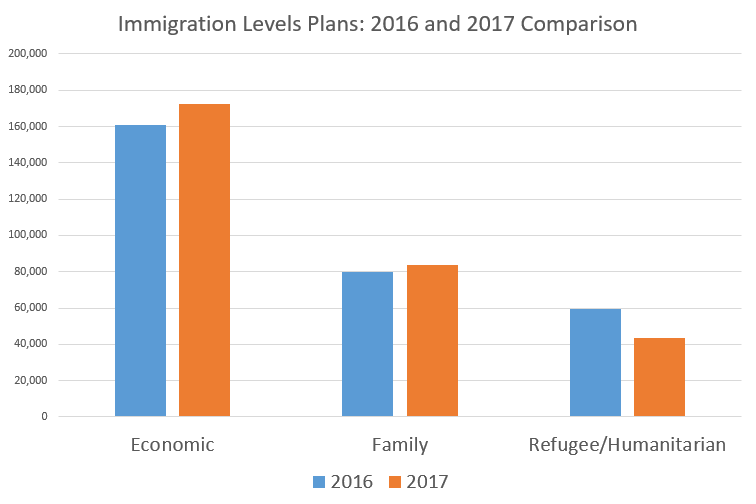
April
IRCC released its long-awaited year-end Express Entry report in April. Among other details, it was revealed that an increasing number of candidates outside Canada were being invited to apply for permanent residence — over the second half of 2015, 39% of all invited candidates resided outside Canada, more than double the figure for the first half of the year. Ontario, Alberta, and British Columbia remained the most popular destination provinces, though at a per capita rate, Nova Scotia, Saskatchewan, and Prince Edward Island (PEI) were also highly popular.
There was also movement in business immigration to Canada when Quebec announced reopening dates for each of its business immigration categories, including the ever-popular Quebec Investor Program, as well as the entrepreneur and self-employed categories.
May
Since the Ontario Immigrant Nominee Program (OINP) first announced that it was aligning certain streams with the federal Express Entry system in June, 2015, candidates noted that the OINP provided a route to provincial nomination, which comes with a 600-point bonus under the CRS and an ITA at subsequent draw. The Human Capital Priorities stream proved to be particularly popular. This stream is 'passive' in the sense that an Express Entry candidate may only make an application if he or she is contacted by the OINP and issued what is known as a Notification of Interest (NOI).
In May, 2016, Ontario announced that it was placing a temporary pause on applications under some OINP streams, including Human Capital Priorities, due to the allocation having been reached. However, the OINP stated that it expected to be in a position to accept new applications through these streams again. Candidates in the pool should expect news from Ontario in the near future.
Also in May, BC had its BC PNP allocation increased, Saskatchewan welcomed more newcomers through its International Skilled Worker categories (including the SINP Express Entry sub-category), and the government edged closer to changing the Citizenship Act. Among other changes, these legislative changes would reduce the amount of time permanent residents have to live in Canada in order to become eligible to apply for citizenship.
June
The much-anticipated summer application intake period for the Quebec Skilled Worker Program opened the morning of June 13, before closing within hours after the intake cap was reached. This intake was restricted to individuals who had already created a Mon Projet Québec account earlier in the year, though the creation of new accounts was opened up later in the month in anticipation of the next intake period.
In other news, Manitoba and Saskatchewan continued to welcome skilled workers to their provinces through the Provincial Nominee Programs.
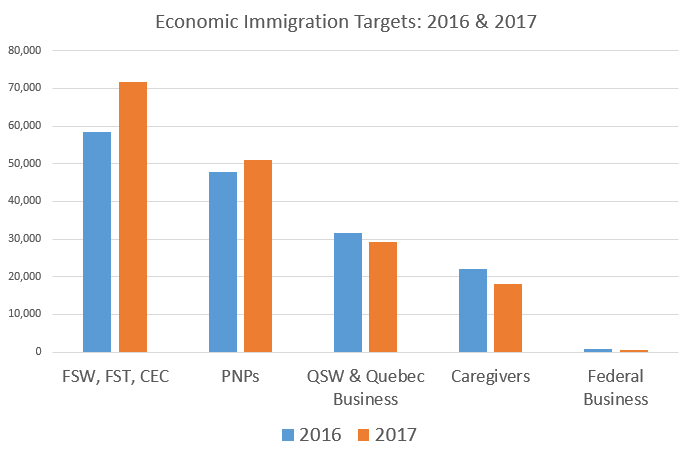
July
By mid-summer, the number of candidates being invited to apply for permanent residence through Express Entry had decreased to around 750-800 per draw. However, an IRCC representative, speaking at an event in Edmonton, Alberta earlier in the summer, revealed that the number of ITAs issued would increase significantly later in the year. In the end, this turned out to be the case.
The provinces remained active, with Saskatchewan and Manitoba conducting draws, and Canada’s Atlantic provinces announcing a new collective strategy with the federal government. This strategy eventually became the Atlantic Immigration Pilot Program, through which up to 2,000 newcomers will come to Canada in 2017.
August
The August intake for the Quebec Skilled Worker Program, much like the June intake, was reached within hours of the program reopening, benefiting individuals who had prepared well in advance. The government of Quebec wishes to move to a demand-based ‘Expression of Interest’ system (akin to the federal Express Entry system) at some stage in 2017, and so this intake may have been the final intake under the first-come, first-served system. But you never know, tech projects tend to take longer than expected to implement, and the program may reopen under the first-come, first-served model again before the new system comes into force.
British Columbia performed two BC PNP draws in August, providing a route to permanent residence for hundreds more workers and graduates. One noteworthy aspect of the BC PNP International Graduate sub-categories is that the graduate does not necessarily need to have studied in BC; graduates of institutions in other provinces may be eligible. There was also a draw under the Manitoba Provincial Nominee Program, and Saskatchewan’s International Skilled Worker – Occupations In-Demand sub-category reopened for 700 new applications (and, like previous intakes, this first-come, first-served intake filled within a couple of days).
September
There was plenty of Express Entry news through September as the number of ITAs issued began to increase when each draw was announced. Eventually, this culminated in draw sizes tripling between late August and mid-November. The CRS cut-off threshold also began to decrease once again at this time, in line with IRCC’s expectations.
It was also revealed that more than 320,000 new permanent residents had landed in Canada over the period from July, 2015 to July, 2016, the highest number of new arrivals for many decades. Six provinces took in record numbers of newcomers.
In addition, British Columbia and Manitoba both conducted draws through their respective PNPs.
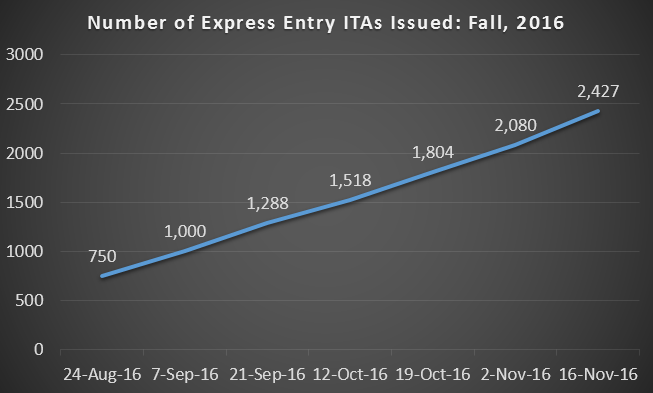
October
After a month in which Express Entry draws continued to grow larger in size, the big news in October came on the final day when IRCC published its 2017 Immigration Levels Plan. This plan called for significant increases in economic immigration to Canada, particularly through the programs managed under Express Entry, as well as the Provincial Nominee Programs (and many PNPs continued to welcome new applications through October). The number of people to be invited to apply for Canadian permanent residence through Express Entry in 2017 is expected to go up considerably.
The government also announced its intention to raise the maximum age of dependent children that may be included on an immigration application to less than 22 years of age (up from the current limit of less than 19). This goal forms part of the government’s commitment to family reunification.
November
November was arguably the most important month in Canadian immigration over the entire year. In any other month, the fact that government of Canada’s website crashed in the wake of the U.S. Presidential Election would be the main story, but not so in November, 2016, for this was the month when long-awaited improvements to the Express Entry system were announced. Not only that, but these improvements came into force just a week after the announcement.
The changes included the awarding of CRS points to former international students in Canada, a reduction in the number of points awarded for a qualifying job offer, the introduction of new ways to be awarded points for a job offer, and an increase in the validity of an ITA once it is issued to a candidate.
The expected outcome of these changes, according to IRCC, will be that ‘A reduction of points to candidates with arranged employment means the CRS cut-off will decline.’ Since the changes were first announced, tens of thousands of candidates and potential candidates have used the CRS Calculator to determine how the changes may affect their profile.
December
So far, December has also been a busy month. The Immigration Minister has announced that processing times for the spousal/common-law partner categories of Family Class immigration programs are to be reduced to 12 months, from an average of 24 months, with an additional goal to eventually reduce processing times to as low as six months. There was further good news for spouses and partners being sponsored within Canada when the Open Work Permit Pilot Program was extended for another year.
And that was not all the changes under the Family Class this month, as it was also announced that there would be a new lottery system for the 2017 Parent and Grandparent Program intake, providing sponsors with a 30-day window of opportunity to register their interest as of January 3, 2017.
Finally, there have been further draws for skilled workers at the federal (Express Entry) and provincial levels over the closing weeks of the year. The latest Express Entry draw saw a total of 1,936 candidates invited to apply for permanent residence.
2017 expected to bring more updates than ever
“Right now, there is an appetite among all stakeholders for an even more robust, dynamic immigration system. The provincial governments are crying out for newcomers, and the federal government is well positioned and inclined to bring them in. Businesses and communities are looking for talent and regeneration,” says Attorney David Cohen.
“2016 was remarkable for a number of reasons. Government goals were announced, but more importantly these goals were then met. We can expect more of the same as we enter 2017.
“For individuals who have not yet taken steps toward realizing their own immigration objectives, I encourage them to complete an assessment so that they can know the full scope of their options. At this time, with so many changes having taken place and more to come, it is important to lay out a pathway that makes sense for the individual and his or her family, if indeed that is applicable.”
To find out if you are eligible for immigration to Canada, please fill out a free online assessment today.
© 2016 CICNews All Rights Reserved
- Do you need Canadian immigration assistance? Contact the Contact Cohen Immigration Law firm by completing our form
- Send us your feedback or your non-legal assistance questions by emailing us at media@canadavisa.com
